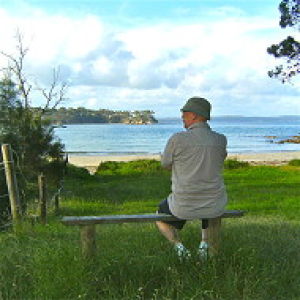Just hangin'
I returned to the Batemans Bay Water Gardens today, primarily to have a stab at snapping the birdlife, but the bats all but monopolised my attention. Up to 5000 Grey Headed Flying Foxes (to give them their proper name) are camped in the trees at the water's edge, and their presence is a matter of some controversy. Nearby householders complain of the noise, the droppings, the smell and the danger of disease. A government scientific report, however, comes down on the side of the flying fox, saying the animal is an environmental asset and listing it as a Vulnerable Species.
Unlike most bats, which rely on radar to find their food, this mega-bat - an adult has a wingspan of about a metre - uses sight and smell. (Its own smell, by the way, is not from its droppings. It is from scent glands mating pairs use to keep track of each other.) The bat's vision is just as good as ours during the day and even better at night. It is commonly known as a fruit bat but actually has a diet of mostly nectar and pollen; when it occasionally does eat fruit, it spits out the seeds. It sometimes flies up to 50km (31 miles) during the night to find food. When food gets scarce, it moves to another area. Since it travels such long distances carrying pollen, the Grey Headed Flying Fox plays an important role in the survival of forests and diversity of plants.
Try telling that to its neighbours in Batemans Bay. When a major camp was causing problems at the Royal Botanic Gardens in Sydney, the bats were quickly evicted by the playing of recordings of loud industrial noise and banging sounds.

Comments
Sign in or get an account to comment.


